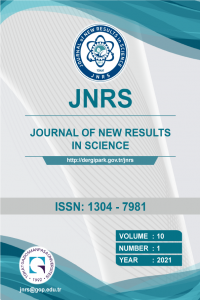Thermostable Serine Protease By Aspergillus parasiticus TEM Have Promising Activity In Enzymatic Dehairing Process
In the present study, Aspergillus parasiticus TEM obtained from our culture collection produced appreciable quantities (2955.739.4 U/gds) of extracellular protease, but negligible quantities of keratinase, when grown on wheat bran moistened to 75% with Czapex Dox solution containing 1% NaNO3 by means of solid-state fermentation (SSF). After incubation at 27C for 3 days, A. parasiticus TEM reached to a maximum protease activity. The optimum pH of purified enzyme was around pH 8.0 at 30C, but substantial activity was recorded at the pH 7.0-11.0 and it is stable pH values ranging from 7.0-9.0 for 8 hours. Temperature optimum of the enzyme was found to be at 50 oC without Ca++ and to be highly stable (90%) at 30oC for 8 hours. When the protease from A. parasiticus TEM was used in dehairing process of cattle hide, the mixture of 100% crude enzyme, 1.5% lime and 1% sodium sulphide based on hide weight was completely dehaired hides at 30oC for 6 hours, but crude enzyme 200% alone carried out this process for 8 hours
Keywords:
-,
___
- Dayanandan, A., Kanagaraj, J., Sounderraj, L., Govindaraju, R. and Rajkumar, G. S.; Application of an alkaline protease in leather processing: an ecofriendly approach. Journal of Cleaner Production 11, p. 533-536, 2003.
- Thanikaivelan, P., Rao, J. R., Nair, B. U. and Ramasami, T.; Progress and recent trends in biotechnological methods for leather processing. TRENDS in Biotechnology 22(4), p. 181-188, 2004.
- Godfrey, T., and West, S.; Industrial Enzymology. 2nd Ed. MacMillan Press Ltd., London, 1996.
- Novo Nordisk; Enzymes at Work. Berlitz Translation Services, Copenhagen, Ed., Novo Nordisk, Bagsvaerd, 1995.
- Novo Nordisk; Four steps where enzymes improve skins and hides. In: BioTimes, No. 2, Novo Nordisk, Bagsvaerd, p. 8–9, 1997.
- Langmaier, F., Kolomazník, K., Sukop, S. and Mládek, M.; Products of enzymatic decomposition of chrome-tanned leather waste. JSLTC 83(4), p. 187-195, 1999.
- Nakiboğlu, N., Toscalı, D. and Yasa, I.; Silver recovery from waste photographic films by an enzymatic method. Turkish J. Chem. 25, p. 349-353, 2001.
- Tunga, R., Shrivastava, B. and Banerjee, R.; Purification and characterization of a protease from solid state cultures of Aspergillus parasiticus. Process Biochemistry 38, p. 1553-1558, 2003.
- Tari, C., Gencekal, H. and Tokatlı, F.; Optimization of a growth medium using a statistical approach for the production of an alkaline protease from a newly isolated Bacillus sp. L21. Process Biochemistry 41, p. 659-665, 2006.
- Gehring, A. G., DiMaio, G. L. Marmer, W. N. and Mazenko, C. E.; Unhairing with proteolytic enzymes derived from Streptomyces griseus. JALCA 97(10), p. 406-411, 2002.
- Prakasham, R.S., Subba Rao, Ch., and Sarma, P.N. Green gram husk—an inexpensive substrate for alkaline protease production by Bacillus sp. in solid-state fermentation Bioresource Technology 97, p. 1449–1454, 2006
- Yasa, I. and Cadirci, BH. Microbial Physiology, Ege University Press, Izmir, 2010.
- Anson, M. L.; The estimation of pepsin, trypsin, papain and cathepsin with haemoglobin. The Journal of General Physiology. 22, p. 79-89, 1938.
- Takami, H., Akiba, T. and Horikoshi, K.; Characterization of an alkaline protease from Bacillus sp. no. AH-101. Applied Microbiology and Biotechnology 33(5), p. 519-523, 1990.
- Riffel, A., Ortolan, S. and Brandelli, A.; De-hairing activity of extracellular proteases produced by keratinolytic bacteria. Journal of Chemical Technology and Biotechnology 78, p. 855-859, 2003.
- Aslan, A., Karavana, H.A., Gulumser, G., Yasa, İ. ve Cadirci, B.H. Utilization of Collagen Hydrolysate in Keratinase Production from Bacillus subtilis ATCC 6633, Journal of the American Leather Chemists Association, 102 (4): 129-134, 2007.
- Bressolier, P., Letourneau, F., Urdaci, M. and Verneuil, B.; Purification and characterization of a Keratinolytic serine proteinase from Streptomyces albidoflavus. Applied and Environmental Microbiology 65(6), p. 2570-2576, 1999.
- Bernal, C., Vidal, L., Valdivieso, E. and Coello, N.; Keratinolytic activity of Kocuria rosea. World Journal of Microbiology & Biotechnology 19, p. 255-261, 2003.
- Bradford, M. M.; A rapid and sensitive method for the quantization of microgram quantities of protein utilizing the principle of protein dye binding. Analytical Biochemistry 72(1-2), p. 248-254, 1976.
- Chakraborty, R., Srinivasan, M., Sarkar, S. K. and Raghavan, K. V.; Production of acid protease by a new Aspergillus niger by solid substrate fermentation. Journal of Microbial Biotechnology 10, p. 17-30, 1995.
- Malathi, S. and Chakraborty, R.; Production of alkaline protease by a new Aspergillus flavus isolate under solid-substrate fermentation conditions for use as a depilation agent. Appl. Environ. Microbiol. 57(3), p. 712-716, 1991.
- Boer, C. G. and Peralta, R. M.; Production of extracellular protease by Aspergillus tamarii. J. Basic Microbiol. 40(2), p. 75-81, 2000.
- Fernández-Lahore, H. M., Fraile, E. R. and Cascone, O.; Acid protease recovery from a solid-state fermentation system. Journal of Biotechnology 62, p. 83-93, 1998.
- Farag, A. M. and Hassan, M. A.; Purification, characterization and immobilization of a keratinase from Aspergillus oryzae. Enzyme and Microbial Technology 34, p. 85-93, 2004.
- Raju, A. A., Chandrababu, N. K., Samivelu, N., Rose, C. and Rao, N. M.; Eco-friendly enzymatic dehairing using extracellular proteases from a Bacillus species isolate. JALCA 91(5), p. 115-119, 1996.
- Santos, R. M. D. B., Firmino, A. A. P., de Sa´, C. M. and Felix, C. R.; Keratinolytic Activity of Aspergillus fumigatus Fresenius Current Microbiology, 33(6), p. 364-370, 1996.
- Gupta, R. and Ramnani, P.; Microbial keratinases and their prospective applications: an overview. Applied Microbiology and Biotechnology 70, p. 21-33, 2006.
- Zerdani, I., Faid, M. and Malki, A.; Feather wastes digestion by new isolated strains Bacillus sp. in Morocco. African Journal of Biotechnology 3(1), p. 67-70, 2004.
- Anonymous; Protease inhibitors. Homepage online, available from http://www.roche- applied-science.com/sis/complete/index.jsp?/proteaseinhibitor (accessed 01.07.2006).
- Anonymous; Protease inhibitors. Homepage online, available from http://www.tecimport.com.br/Serva2004/products/knowledge/061311.shtml (accessed 01.07.2006).
- Foroughi, F., Keshavarz, T. and Evans, C. S.; Specificities of proteases for use in leather manufacture. Journal of Chemical Technology and Biotechnology 81, p. 257-261, 2006.
- ISSN: 1304-7981
- Yayın Aralığı: 3
- Başlangıç: 2012
- Yayıncı: TOKAT GAZİOSMANPAŞA ÜNİVERSİTESİ
